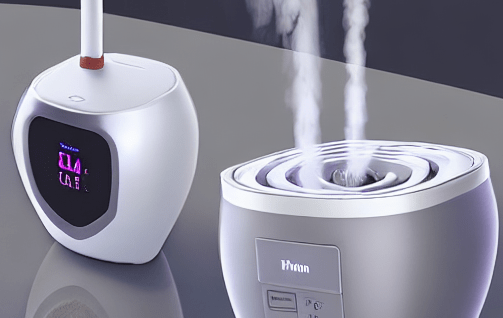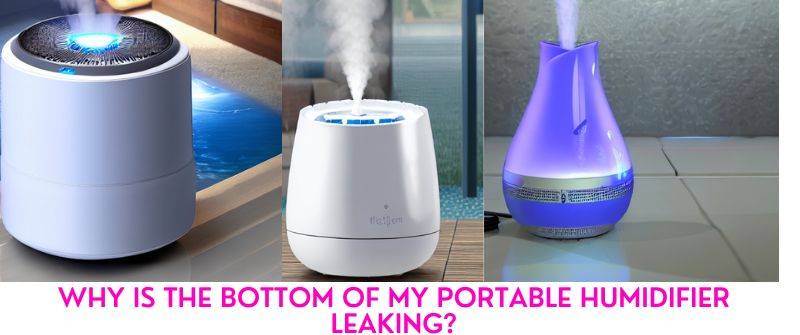Dry dwellings are a result of the cold weather. And dry homes cause scratchy throats, irritated sinuses, and itchy skin. A portable humidifier is frequently the first solution homeowners and contractors turn to in order to combat the consequences of “dry house syndrome.”
A portable humidifier is a small, portable device that can be used to add moisture to the air in a specific room or area. These devices often use a water tank that can be filled with water, which is then turned into mist or steam and released into the air.
Portable humidifiers are often used to help alleviate dry air conditions, such as those caused by central heating systems. They can also help to alleviate certain respiratory conditions, such as dry coughs or nasal congestion.
It is also more likely for homes to become dry during cold weather. The dryness in homes can cause a number of health problems, including scratchy throats, irritable sinuses, and itchy skin.
To counter the effects of a “dry house syndrome” which is a condition where there is insufficient humidity in a house, homeowners and contractors often turn to a portable humidifier.
In this article am going to discuss the common problems with portable humidifiers
Why Is My Portable Humidifier Leaking From The Bottom
My humidifier started to leak after a few years of use and stopped functioning properly. I was able to fix it after trying a few different things. It is now operating flawlessly.
I have had my humidifier for a number of years, but after a few years, it started to leak and was unable to function correctly. Luckily, I was able to fix the problem after experimenting with a few different things. Currently, it is working flawlessly, and I am very happy with it.
Hopefully, the steps in the following article will be helpful to you if you own the same model and are upset that yours is leaking, and need to be fixed.
Common Problems With Portable Humidifiers

Some common problems that can occur with portable humidifiers include:
- Leaks: If the humidifier is not properly sealed or if the water tank is not securely attached, it can leak and cause water damage to the surrounding area.
- Mineral buildup: Over time, minerals from the water can build up inside the humidifier and clog the misting nozzle, reducing its effectiveness.
- Bacterial growth: If the water in the humidifier is not changed frequently, bacteria and other microorganisms can grow, which can be harmful when inhaled.
- Inadequate humidification: If the humidifier is not properly sized for the room or if it is not used correctly, it may not effectively increase the humidity in the air.
- Noise: Some portable humidifiers can be noisy, which can be annoying for people who are trying to sleep or work in the same room.
How To Fix A Leaking Portable Humidifier
The following are some of the potential reasons that could cause the humidifier to start leaking:
- Your portable humidifier’s water tank is probably not correctly placed or sealed, which is why water is leaking out the bottom. To begin fixing the problem, confirm that the water tank is properly installed and sealed.
- Leaks can also be caused by a cracked or damaged water tank in particular circumstances. You might need to replace the tank if it is broken or damaged.
- It’s also a good idea to read the owner’s handbook that came with the humidifier you have because it can provide directions on how to properly seal the water tank.
- If you are unable to resolve the problem, you might need to get in touch with the manufacturer for more help.
1) Taking it Apart And Cleaning The Humidifier.
Before I made the water tank repairs detailed below, I disassembled and thoroughly cleaned the humidifier. It’s a pretty ingenious bit of high-tech engineering, combining electronics, rubber tubing, a heating element, and other components.
As you disassemble your humidifier, take note of how each component fits together.
Use a Phillips screwdriver to loosen and remove the several screws that are located on the unit’s bottom and back. To fully disassemble everything, you’ll also need to conduct some trial-and-error research.
When I disassembled my unit, I discovered that multiple components had different degrees of calcium deposits and other gunk coating them.
(Using pure water will likely reduce this issue. Hard water deposits are typically present in tap water.)
The transducer and its surroundings were particularly dirty. After meticulously cleaning everything, I put the humidifier back together.
Much to my dismay, the humidifier improved but it continued to leak. The following steps took care of the leaking problem.
2) Repairing the Water Tank
The tank appeared to have cracks after I closely examined it, after which there was a leak in the tank. The water continued to drain from the tank without stopping even when it was placed on the main unit, causing the water to overflow.
The leaking on the tank stopped when I sealed all the seams and repaired the cracks.
The first step is to get some silicone glue first. I used GE Silicone II.
Step two is to drain the tank, and clean and dry the exterior completely.
Step three involves gluing the seams and any cracked areas.
Step four is using something flat to smoothen the glue and allow the glue to dry.
Next, fill the water tank and attach it to the main unit. To avoid water leaks, make sure to reassemble everything properly.
Finally, your humidifier should stop leaking and once more operate flawlessly!
I only use water that has been treated using reverse osmosis to keep my humidifier functioning properly.
I used regular tap water when I initially got the appliance, and I was disappointed to discover that it left a fine film of dust all over the place. I did some study and discovered that the hard water deposits are what cause this issue while drinking regular tap water.
The humidifier stopped producing dust as soon as I switched to using pure water.
Perhaps you can fix your humidifier using the above-described procedure. Ever since I fixed my humidifier I’ve had no leaks and the humidifier’s performance has been amazing. It’s generating a lot of humidified air.
How To Maintain Portable Humidifier
No matter how sophisticated the humidifier is, it will still need to be maintained on a regular basis because it won’t function well or at all without it. The truth is, I hardly ever see one that is well-maintained.
To maintain a portable humidifier, follow these steps:
Clean the humidifier regularly. This will prevent the buildup of mold and bacteria, which can be harmful to your health.
On a regular basis, visually inspect your humidifier. Verify that none of the humidifier’s parts or the humidifier itself are dripping with water.
After the heating season is through, clean the humidifier parts that have become polluted with mineral deposits; it will be much simpler to do so while everything is still damp and pliable.
For more heavily polluted components, you can use a 50/50 vinegar-water solution. To assist with cleaning, simply soak them for 15–30 minutes (or longer if necessary).
Use the right water. Tap water contains minerals that might accumulate in the humidifier and lessen its efficiency. Instead, use distilled water.
On a regular basis, visually inspect your humidifier machine. Ensure that neither the humidifier nor any of its parts are dripping with water.
Conclusion
To avoid these problems, it is important to choose a high-quality humidifier and follow the manufacturer’s instructions for proper use and maintenance.
Regularly cleaning and changing the water in the humidifier can help prevent bacterial growth and mineral buildup, and using the humidifier according to the manufacturer’s recommendations can help ensure that it effectively increases the humidity in the air.
It’s important also to know if your portable humidifier system is leaking, so you should always check for signs of leakage regularly.
Depending on the type of portable humidifier, they can leak from different areas of the device. If you encounter a leak from a specific area of your humidifier, take the time to inspect that area to see where exactly the leak is coming from.
Finally, although these are the steps I discovered through research, there might be other factors that could be affecting your situation. It is also possible that there is an issue with the humidifier’s design or manufacturing.
So If you are unable to resolve the problem, you might need to read the owner’s handbook that came with the humidifier or gets in touch with the manufacturer for more help.
- 23 Must Try Outdoor Fire Pit Setups for Cozy Nights - July 5, 2025
- 24 Modern Fire Pit Ideas to Elevate Your Backyard Style - July 5, 2025
- 15 Unique DIY Fire Pit Ideas That Instantly Upgrade Your Backyard - July 4, 2025

